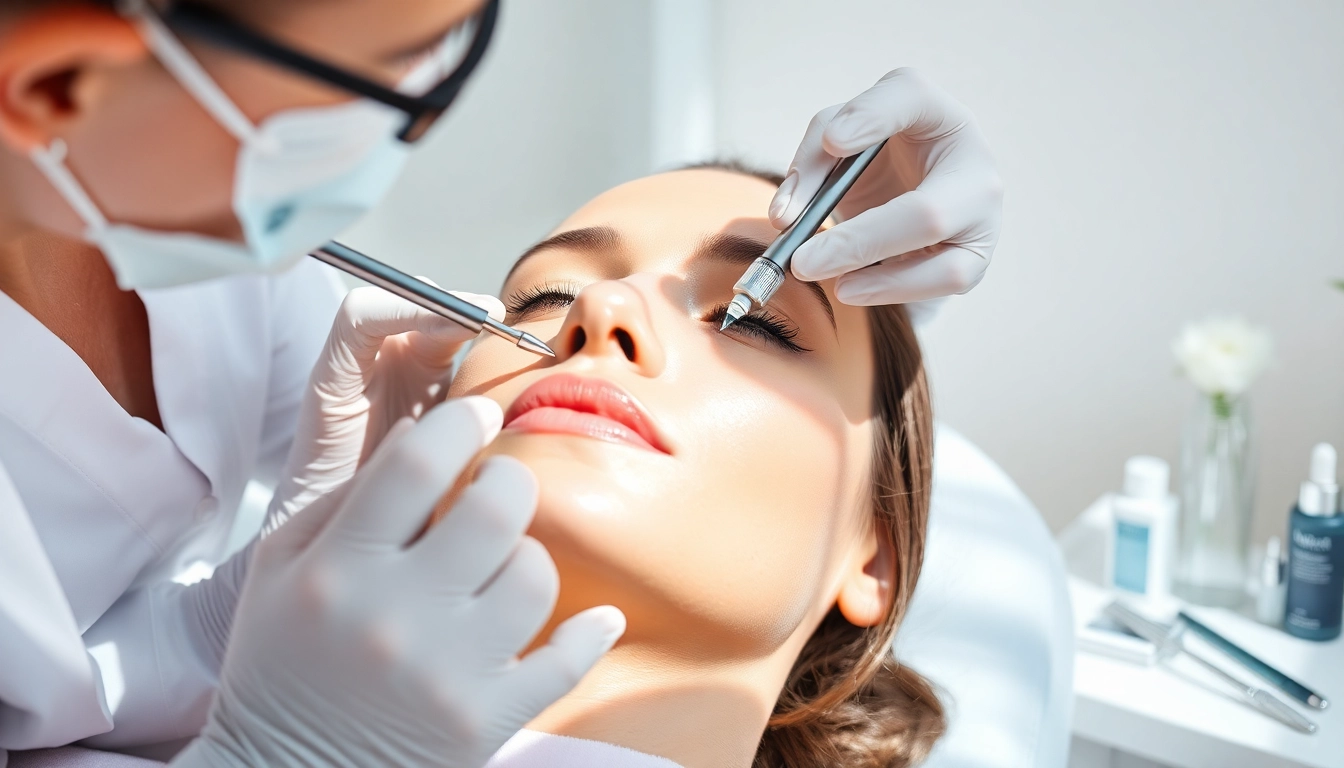
The Benefits and Insights of Jaw Botox Treatment for a Defined Look
Understanding Jaw Botox: What You Need to Know
As cosmetic procedures continue to evolve, jaw botox has emerged as a popular treatment option for individuals looking to enhance their facial aesthetics and address functional concerns. This minimally invasive procedure offers various benefits beyond aesthetic enhancement, attracting attention from those seeking relief from dental issues, jaw tension, and a more defined facial contour. In this comprehensive guide, we will explore what jaw Botox is, how it works, the benefits it provides, and important considerations to keep in mind before opting for this treatment.
What Is Jaw Botox?
Jaw Botox refers to the injection of botulinum toxin type A into the masseter muscles, which are responsible for chewing and clenching the jaw. Primarily known for its cosmetic applications in reducing wrinkles, Botox has been found to be quite effective in relaxing hyperactive muscles in the jaw, leading to a range of improvements in both appearance and function.
Typically, this procedure is performed in an outpatient setting and involves minimal downtime, making it an attractive option for individuals looking for quick and effective results in their cosmetic journey. Whether it’s to enhance jawline definition or relieve discomfort caused by teeth grinding, jaw Botox presents a versatile solution.
How Does Jaw Botox Work?
Botox works by blocking the release of acetylcholine, a neurotransmitter responsible for muscle contraction. When injected into the masseter muscle, it temporarily weakens the muscle’s ability to contract, resulting in reduced muscle size and tension. This reduction can lead to a more sculpted jawline appearance and alleviation of symptoms related to teeth grinding or jaw clenching.
The procedure typically follows these steps:
- Consultation: A licensed healthcare provider assesses your needs and medical history.
- Preparation: The area is cleaned, and any necessary topical anesthetics are applied to minimize discomfort.
- Injection: Using a fine needle, the provider injects a predetermined amount of Botox into specific points in the masseter muscle.
- Post-Procedure Care: Patients are advised on how to care for the injection sites and what to expect in the following days.
Common Myths and Facts About Jaw Botox
Several myths circulate regarding jaw Botox that can perpetuate misunderstanding. Here are a few common myths, debunked:
- Myth: Jaw Botox is only for cosmetic improvement.
Fact: While jaw Botox does enhance facial contours, it is also effective for medical issues like bruxism (teeth grinding) and TMJ (temporomandibular joint disorder). - Myth: Jaw Botox changes the shape of your face permanently.
Fact: The effects of jaw Botox are temporary, typically lasting 4-6 months, after which the muscle’s activity returns to normal. - Myth: The procedure is painful and has a long recovery time.
Fact: Most patients report minimal discomfort during the procedure, and recovery time is typically quick, allowing for a return to regular activities almost immediately.
Benefits of Jaw Botox: More Than Just Aesthetics
Jaw Botox offers a range of benefits beyond simply enhancing the jawline. Below are some of the primary advantages of undergoing this treatment:
Improving Facial Contours
One of the most notable benefits of jaw Botox is its ability to improve facial contours. By relaxing overdeveloped masseter muscles, jaw Botox can create a slimmer and more sculpted jawline, contributing to an overall balanced facial aesthetic. This can be particularly appealing for individuals who feel their jawline is too broad or masculine, leading them to seek a more refined look.
Reducing Jaw Clenching and Discomfort
For many individuals, jaw clenching and teeth grinding—often related to stress or anxiety—can lead to discomfort, headaches, and even dental issues over time. Jaw Botox can effectively alleviate these symptoms by relaxing the masseter muscles, providing relief and improving overall quality of life. Many patients report significant reductions in tension and pain following treatment, allowing them to enjoy their daily activities without discomfort.
Boosting Confidence and Self-Esteem
Increasingly, cosmetic procedures are being recognized not only for their physical benefits but also for their mental and emotional impacts. Many patients who seek jaw Botox treatment express feelings of increased confidence and elevated self-esteem after experiencing improved facial aesthetics and reduced discomfort. Feeling good about one’s appearance can have far-reaching implications, positively affecting both personal and professional interactions.
Risks and Considerations of Jaw Botox
While jaw Botox can provide numerous benefits, it is essential to consider potential risks and determine whether you are an ideal candidate for the treatment. Below are key points to keep in mind:
Potential Side Effects
Understanding the potential side effects of jaw Botox is crucial for informed decision-making. Some common side effects include:
- Bruising and swelling at the injection site
- Headaches or flu-like symptoms
- Mild pain or discomfort
- Asymmetry or uneven results, which can occur if the treatment is not administered accurately
Most side effects are temporary and typically resolve within a few days. However, it is essential to discuss any concerns with your provider during the consultation phase.
Who Is an Ideal Candidate?
Not everyone is a suitable candidate for jaw Botox. Ideal candidates typically include:
- Adults seeking improvement in jawline aesthetics or relief from jaw-related discomfort
- Individuals with excess muscle activity in the masseter muscle
- Those without a history of allergies or adverse reactions to Botox
- Individuals without existing medical conditions that could contraindicate treatment
Consulting with a qualified practitioner is essential to ensure you meet the criteria for safe treatment.
Consultation and Medical History Importance
Before proceeding with jaw Botox, a thorough consultation is crucial. This includes a comprehensive review of your medical history, discussing any allergies, medications, and overall health status. The practitioner will assess your goals and expectations, helping you to understand what can realistically be achieved through treatment. This collaborative approach helps to ensure optimal outcomes and patient satisfaction.
Jaw Botox Procedure: What to Expect
Understanding the jaw Botox procedure helps demystify the treatment and sets appropriate expectations. Here is what to expect during and after your appointment:
Step-by-Step Treatment Overview
The jaw Botox treatment process, when performed by a licensed professional, is straightforward:
- Initial Consultation: Discuss your concerns and desired outcomes with the practitioner.
- Preparation: The injection sites are marked, and a topical anesthetic may be applied.
- Injection: Botox is injected using a fine needle into precise locations on the masseter muscle.
- Post-Treatment Instructions: Guidance is provided on post-treatment care and what to expect in the following days.
Post-Treatment Care Guidelines
Taking care of your face after jaw Botox is vital to ensure optimal healing and results. Here are some important post-treatment care guidelines:
- Avoid vigorous exercise and activities that may put pressure on the jaw for at least 24 hours.
- Do not massage the treated area for at least a few days to prevent spreading the Botox to unintended muscles.
- Stay hydrated and maintain a healthy diet to support the healing process shortly after the procedure.
- Follow up with your provider if you experience any unusual side effects or concerns.
Managing Expectations and Results
Results from jaw Botox may take a few days to manifest, often peaking around two weeks post-treatment. Patients should anticipate a gradual reduction in muscle bulk and clenching ability, leading to a more defined jawline and noticeable relief from discomfort. However, it is essential to manage expectations as results can vary from patient to patient based on factors such as treatment location, muscle condition, and individual response to Botox.
Comparing Jaw Botox to Other Jaw Enhancement Techniques
With various options available for jaw enhancement, understanding how jaw Botox compares to other techniques is vital for making informed decisions. Below are comparisons with other common treatments:
Jaw Botox vs. Dermal Fillers
While jaw Botox primarily works by reducing muscle mass and tension, dermal fillers serve a different purpose. Fillers can enhance volume in specific facial areas, creating a more defined jawline by adding structure and contour. In essence, Botox relaxes existing muscle bulk, while fillers can add volume and shape. Many individuals choose to combine both treatments for optimal results; however, the approach depends on individual goals.
Surgical Options vs. Botox
Surgical options for jaw enhancement, such as jaw reduction surgery, present a more permanent solution compared to the temporary effects of jaw Botox. While surgery can yield more dramatic alterations, it carries increased risks, more significant recovery time, and higher costs. On the other hand, jaw Botox is less invasive, requiring only a short appointment with limited downtime. Individuals who prefer gradual change or are unsure about permanent alterations often lean toward Botox as a preferable option.
Choosing the Right Option for You
Your decision to pursue jaw enhancement should be based on a thorough understanding of your aesthetic goals, budget, and willingness to undergo surgical intervention. Consulting with a qualified healthcare provider can help you navigate your options, assess the pros and cons, and establish a personalized treatment plan that aligns with your desires. Comprehensive discussions regarding budget considerations, time involved, and recovery can lead to informed choices that ensure satisfaction with your decision.
Conclusion
Jaw Botox represents a versatile treatment option for those seeking improvement in both appearance and jaw function. By understanding the intricacies of the procedure—including the benefits, risks, and comparisons with alternative treatments—individuals can make informed decisions that align with their needs and goals. As always, consultations with qualified practitioners play a crucial role in ensuring the best outcome and satisfaction with cosmetic procedures. Whether you are seeking an aesthetically pleasing jawline or relief from dental discomfort, jaw Botox could be a pathway to achieving those aspirations.



